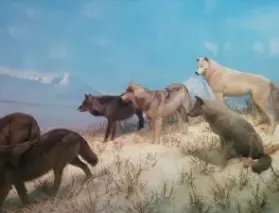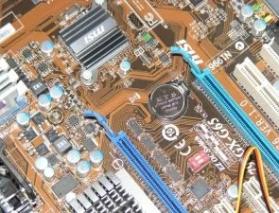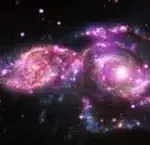 It was January 28, 1986. I was a junior in high school. I was headed off to my Algebra II class when one of my friends passed me in the hallway and said of my Algebra teacher, “He’s really down today. Did you hear what happened?”
It was January 28, 1986. I was a junior in high school. I was headed off to my Algebra II class when one of my friends passed me in the hallway and said of my Algebra teacher, “He’s really down today. Did you hear what happened?”
“Well, he’s never really in a great mood anyway. What is it?”
“The space shuttle. It exploded. I guess he had spent the summer working with some of the astronauts that were on it.”
I went somewhat numb as I continued to walk to class. It turns out that my teacher wasn’t there. He had gone home. The astronauts of the space shuttle Challenger had just died in a horrific explosion shortly after liftoff. My teacher had indeed worked with them over the summer–and now they were gone.
That disaster was a major setback to the United States space program. It would be many years before we would return to the stars; but return we would. Very soon, the Artemis program will send us back into space once more.
Given the expense involved in traveling to space and the need for spending some money on projects here on Earth, it would have been very easy for the space pioneers of the 1980’s to say, “Well, we gave it our best shot, but it just isn’t worth it anymore. Too risky. Too expensive. Let’s scrap the whole thing.
But they didn’t.
They didn’t because they had a vision–a vision to branch out from the Earth to the moon, then to Mars, and then…to the final frontier. The quest for knowledge and adventure is programmed into the human spirit. Setbacks notwithstanding, they stepped back, assessed what went wrong, corrected mistakes, and reached out again.
We have all suffered setbacks that have made us deeply consider our courses in life, some perhaps causing us to change course altogether. What we mustn’t do is abandon the mission. It can change shape or destination, but it must never be permanently shelved. When you start to have thoughts of abandoning your mission, whatever that mission may be, step back and re-assess. Is whatever setback you have encountered a disaster warranting the grounding of your purpose? Can you find a means of just changing course, but still going after your ultimate goals?
Little children, who would go on to be future astronauts, watched the Challenger explode. They mourned. They grieved. They questioned their paths–and they pursued them anyway. They knew that their path involved risk. They accepted that and pressed forward, determined to learn from the mistakes and not let them happen again. If every setback resulted in mission abandonment due to potential future risk, human history would have a very different story to tell.
You have a mission in this life, a path you are following, a difference to make. It is uniquely suited to your individual talents and motivations. Others depend on your pursuing it with enthusiasm and dedication, and you owe nothing less than that to yourself as well. Don’t let any setback, no matter how disastrous, permanently derail that for you and those who are counting on you. That isn’t to say that you may not discover some equally important but completely different mission to pursue, causing you to alter your course. Change is inevitable in life. Just don’t let the setback unmoor you completely so that you wander lost through the remainder of your days, one day looking up at the ceiling when it is well past time to reverse course and whispering “I shouldn’t have let that stop me…”
Find a picture of the space shuttle Challenger. Hang that up in a place where the work of your current mission mostly takes place. On the relentless days when the forces arrayed against you seem insurmountable and you start reaching for the “scrub the mission” button, look first at the Challenger. Consider its very name–Challenger. It challenged the odds arrayed against it, and though it lost, the sacrifice of those who gave their lives in the ongoing pursuit of human knowledge and advancement will not, must not, be forgotten. Think of them, and those who came after them, who chose to keep moving forward.
Next to the Challenger picture, find one of the Artemis rocket, ready to depart in a matter of weeks to the moon. That represents not only a reaffirmation of the human spirit, but the beginning of an entirely new mission, with a new course to set and new goals to achieve. Once the Artemis launches, find a picture of its launch moment to mount next to the other two. That moment will proclaim to the universe with one united human voice that no matter the challenge or setback, our spirit will not be held back for good. We may have to re-evaluate our purpose, take some time to reflect, but we will be back, better than ever and ready to blaze a new path to the stars.
Every day that pushes you to your limits, which is probably most days, look at those pictures and contemplate the legacies of the indomitable spirits that to this day continue to inspire us by moving forward. No matter the odds or risks, they rise again–as we must. The temptation to abandon the path will come and go, and if the course must change, so be it. Just never forget the sacrifices of those who gave their lives in the name of humankind’s advancement. Let their legacy help you to make it through that day…and the next…and the one after that. Be the example for those who also are contemplating mission abandonment. Show them that you have the strength to see the mission through, so that they too can find hope. Look to the stars in your own personal sky and reach for them. You are an inheritor of that human spirit that lies ready to inspire us all. We have so many missions to fly. Let’s make it so.
Subscribe to The Spiritual Naturalist Society
Learn about Membership in the Spiritual Naturalist Society
__________
The Spiritual Naturalist Society works to spread awareness of spiritual naturalism as a way of life, develop its thought and practice, and help bring together like-minded practitioners in fellowship.
SNS strives to include diverse voices within the spectrum of naturalistic spirituality. Authors will vary in their opinions, terms, and outlook. The views of no single author therefore necessarily reflect those of all Spiritual Naturalists or of SNS.
_________












